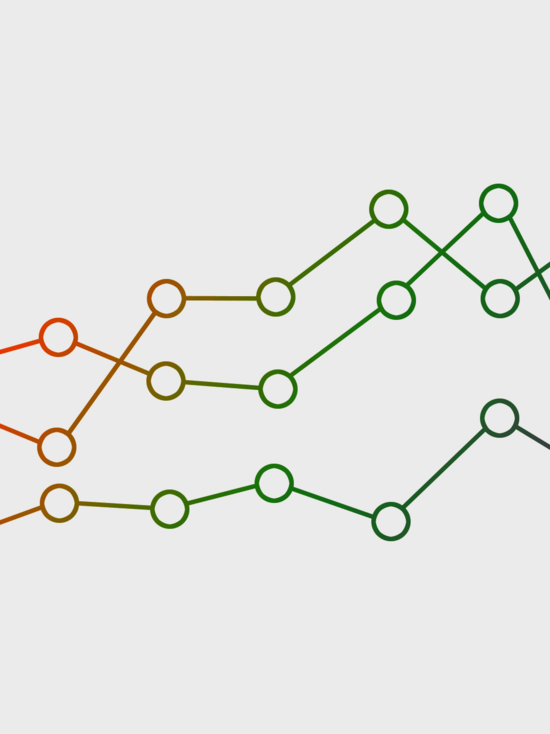The ETL process explained
An ETL process comprises several individual steps with which data is efficiently extracted from various sources, processed and made available in the desired target system. This method is usually used in the area of big data and business intelligence. It ensures that data is transferred correctly, completely and in a format suitable for the target system. In this way, you avoid redundancies and incorrect data records - data quality improves and thus forms an important basis for well-founded business decisions.
ETL processes are used wherever large volumes of data are processed, stored and analyzed. Companies have various data integration tools at their disposal, such as Talend. However, there are also other providers of integration platforms.
Classic applications in companies are
- Collecting data in a data warehouse
- Integration of data for business intelligence solutions
- Merging data from different applications
- Securing large amounts of data by replicating data
- Optimization of data quality
The phases of the ETL process
The abbreviation ETL is made up of the terms Extract, Transform and Load. It describes the three main phases of the process.
Step 1: Extraction
Extraction is the first step of the ETL process. Data is collected from various data sources and prepared for transformation. Often only partial areas are extracted from individual external sources in order to speed up the process. The update rhythm also plays a role in the performance of data migration. With synchronous extraction, the data records are updated continuously, but this leads to increased system utilization due to the volume of data generated. Asynchronous extraction, on the other hand, enables event- or request-driven extractions that take place at a set time - for example, at night when sufficient resources are available.
The following decision-relevant information is collected in this process phase, among others:
- Information from existing databases
- Marketing and sales activities from CRM software
- Activity logs
- Transaction activities
- Data from smartphones, tablets and apps
Step 2: Transformation
The next step is to transform the data from a wide variety of sources. Information that is available in different formats is structured and standardized. Data is cleansed, duplicates are removed and merged into one data set. The aggregation, grouping and sorting of information as well as the enrichment of data with additional information are also part of this process step. At the end of this phase, all data is available in the correct target format and schema of the data warehouse. Transformation is therefore essential to ensure good data integrity and quality.
Step 3: Loading
The final step is the actual integration: loading the transformed data into the target system, for example into a data warehouse. Make sure that the data structure and format of the target system have been correctly taken into account in order to avoid inconsistencies. We recommend carrying out a comprehensive check before loading the data. You can use the log function of the target system for this purpose, which documents all changes in detail. If necessary, you can restore old data sets. This final check step is important to ensure that all data has been successfully integrated into your target system.
ELT instead of ETL for handling big data
Huge amounts of data require high computing power during transfer. To speed up the data migration process, it has proven useful to swap the loading and transforming process steps. This means that the database is fed with untransformed raw data. The data lake then consists of different formats that are only transformed for different evaluations. The raw data remains untouched and continues to exist in the database. This has the decisive advantage that even large volumes of data can be migrated quickly.
6 tips for a smooth data migration
You now know how the ETL process works. But what do you need to consider for a successful data migration in practice? We have put together six useful tips to help you migrate your data successfully.
Thorough planning is the key to a successful data migration. Define clear objectives, determine the scope of the project and identify potential risks. Create a detailed schedule and define responsibilities so that your employees know exactly who has to do what and when.
Before performing the ETL process, it is important to check the data for integrity and accuracy. Identify potential sources of error and carry out comprehensive validation processes to ensure that the data is consistent and error-free. We recommend performing this step not only during the ETL process. Establish regular validation of your data to ensure high data quality in the long term.
When planning the ETL process, you should always keep the future scalability of the system in mind. Make sure that the ETL tool you choose can keep pace with the growing volume of data and the increasing requirements of your company. A well-scaled solution will enable you to expand smoothly.
Before migrating data, you should always create a complete backup copy of your data so that you can fall back on it in the event of an error or data loss. Use proven backup and recovery methods for this.
Check the data migration continuously to identify potential errors or data inconsistencies. Implement effective monitoring tools so that you can counteract deviations or performance problems at an early stage.
To ensure smooth data migration, you should also optimize the performance of the ETL process. Identify performance problems and develop optimization strategies to improve processing speed, such as caching techniques.
Realize your ETL processes with atlantis dx
Successful data migration requires a well-planned and efficient ETL process. As an IT service provider with many years of experience in data & analytics, we at atlantis dx will also get your data integration project off the ground safely. We are happy to provide you with comprehensive advice on data integration and provide you with a customized solution for your individual requirements. We are there for you from the initial consultation and the entire planning through to the implementation of your ETL process and can also take care of further maintenance on request. Arrange a non-binding initial appointment now and get to know our experts!
FAQs on ETL process
The ETL process is a data integration process. It involves extracting data from various sources, transforming the data into a standardized format and loading the transformed data into a target system.
With the help of an ETL process, companies reliably store their data on a central platform in order to use it for data-driven analyses. The transformation means that all the information collected is consistent and of good quality, enabling companies to make well-founded strategic decisions. Automated processes also save human resources and time.
The ETL process consists of the following individual steps:
- Extract: Data is extracted from various sources, e.g. databases, applications or APIs.
- Transform: The extracted data is cleansed, sorted, aggregated and converted into a standardized format.
- Load: All transformed data is loaded into the target system, e.g. a database, a data warehouse or another platform.



